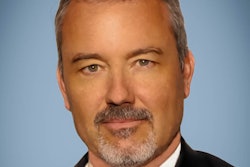
What's the best way for a radiologist to retire? A retirement plan that's phased in is likely the best fit for most radiologists -- as well as their practices -- according to a past president of the Canadian Association of Radiologists (CAR), speaking at CAR's recent annual meeting in Montreal.
Dr. David Vickar, a radiologist with Medical Imaging Consultants and an assistant clinical professor at the University of Alberta, both in Edmonton, Alberta, said a "bridge" to retirement in which experienced radiologists scale back their hours to a part-time schedule allows other radiologists in a practice -- particularly more junior radiologists -- to adapt to the absence of the senior team members.
"The concept of partial or phase-in retirement allows a group of radiologists [to adapt to change]," said Vickar, who works on a 70% schedule at his group radiology practice. "Bridge or part-time retirement will be most palatable for both the individual radiologist and the radiology practice."
Given that the workloads of radiologists have not decreased in recent years, senior radiologists have plenty of room to stay on in a practice and work alongside younger radiologists, he said.
"No one is reporting fewer cases," Vickar said in an interview with AuntMinnie.com. "We are getting busier, and the cases seem to be more difficult as the population ages. My day at work is busier than it was 10 years ago."
Vickar pointed to the 2016 American College of Radiology (ACR) Commission on Human Resources Workforce Survey, which found that job opportunities for radiologists have continued to rise since 2013, and 22% of radiologists are ages 56 to 65. No similar Canadian statistics are available as CAR does not conduct similar surveys on an annual basis.
Quit cold turkey or work 'til you drop?
Retirement options, apart from phasing in retirement, include quitting "cold turkey" or working "until you drop," Vickar noted, and he added that each retirement choice has implications for an individual radiologist and a group radiology practice.
On the other hand, if radiologists remain in a practice on a part-time basis, the institutional memory is preserved, according to Vickar. "If you have older radiologists who are semiretired and stay on with the group [radiology practice], you will have the corporate memory of what you had in the past," he said.
Other benefits to a practice in which more seasoned radiologists select a gradual transition to retirement is that those radiologists can act as mentors to less experienced radiologists, and more senior radiologists are also likely able to act as ambassadors for radiology, because they possess political connections within and outside of medicine, Vickar noted.
Factors involved in the consideration of when to take retirement include whether an individual has leisure activities to enjoy and participates in volunteer activities, Vickar said. After leaving a career in medicine, individuals may not attach the same degree of purpose to their lives as when they were in the radiology workforce if they aren't deriving fulfillment from retirement activities, he explained.
Vickar suggested that radiologists should devote time to weighing their choice of how and when to retire, because retirement will likely last at least 20 years, given that average people age 65 today will live into their mid 80s, according to the 2015 "Consensus Statement on Successful Planning by the Commission on Human Resources of the ACR" (Journal of the American College of Radiology, March 2015, Vol. 12:3, pp. 235-238).
He cautioned that retirement may not necessarily result in greater life satisfaction, noting a 1992 study on satisfaction in retired life that found that up to 30% of retirees experienced a decrease in life satisfaction with retirement.
What are your retirement goals?
Most Canadian physicians retire at ages 62 to 70, noted speaker Danny Caccavelli, a financial planner with MD Management, a subsidiary of the Canadian Medical Association (CMA) that administers more than $30 billion (Canadian) in investments for CMA members and their families.
To adequately prepare for retirement from a financial perspective, objectives of retirement should be established while physicians are still active in their career, according to Caccavelli.
"Depending on what your retirement goals are, that will be the basis of what you need to save," he said. "If you have no idea what your retirement goals are, putting together the right amount of income is quite difficult to do."
At a minimum, an objective of a retirement plan is that a physician is debt-free by the time retirement is reached, Caccavelli noted.
A financial plan for retirement should be continually revised, taking into account any new personal developments, such as a divorce or a critical illness of a family member, and taking into account economic variables like inflation, he said.



















